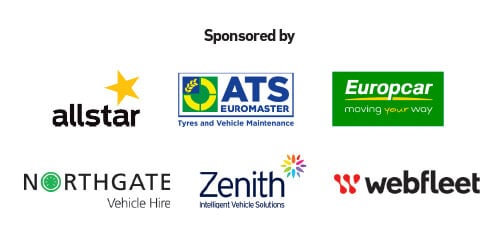This feature was taken from our comprehensive Guide to Running an Electric Fleet. Click here to read the full special report.
 The importance of drivers in the success of a fleet electrification programme cannot be underestimated: as the ones behind the wheel, they ultimately play the most crucial part.
The importance of drivers in the success of a fleet electrification programme cannot be underestimated: as the ones behind the wheel, they ultimately play the most crucial part.
A well-informed and enthusiastic workforce will welcome the opportunity to make the new technology work, as well as being tolerant of any teething troubles or slight change in routine.
However, there will likely be a proportion of drivers who are influenced by the negative coverage and misconceptions pushed by parts of the media so do not want EVs to work.
In these cases, any issue tends to be magnified and the negative attitude can spread to colleagues, leaving an organisation with a workforce which does not want or trust the technology: not a recipe for success.
However, fleet decision-makers can counter this through a mixture of education and staff engagement - here we look at some of the major myths and how they impact fleets.
Information on the technology can be distributed through the company intranet, email newsletters or webinars, allowing employees to learn about the tec
A proven method of winning over doubters is word of mouth among colleagues they trust.
Many organisations recruit EV champions from within their workforce who are happy to share their experiences of the technology, as well as answering questions from their colleagues.
The identity of the EV champion matters. Fleets have found success by choosing an employee who was initially negative about EVs, but having tried them has been a convert.
Their views often carry more weight than simply receiving information from an employer which actively wants its drivers to go into EVs.
Fleet decision-makers have also found success by creating groups on the company intranet or MS Teams where people can share information, while suppliers such as leasing companies and manufacturers may be able to stage a roadshow at an organisation’s property.
These typically involve the supplier bringing vehicles along for employees to try, as well as having experts on hand to answer any questions drivers may have.
Mix of approaches
Professional services company PWC, which has a fleet of 1,350 cars, has found success through a mixture of communication and encouraging employees.
The company first introduced a couple of Mitsubishi i-Miev models as pool cars in 2009 to encourage employees to try out the technology.
It has also hosted webinars, provided information about the technology and tried to take away the anxieties over range and the charging infrastructure.
Abbott Laboratories, which is on target for its 574-strong car fleet to be all-electric this year, has had success in changing attitudes through a training course highlighting the advantages of EVs.
Training should also be provided to drivers who are unfamiliar with the technology as there are a number of crucial differences which mean that a driver who goes straight into a BEV from an ICE vehicle will not get the best out of it.
It may be that drivers are only able to charge at charge points operated by certain companies depended on what card/agreement they have: it is vital drivers know this.
BEVs also have different driving characteristics to ICE vehicles. These include greater instant acceleration and more deceleration when lifting off the accelerator due to regenerative braking, while they also don; have manual gearboxes which drivers may be used to – all of which have safety and efficiency ramifications.
Before Royal Mail took on its first BEV, it developed a EV driver training module which covered charging procedures, vehicle controls, automatic gearbox driving, performance awareness, awareness of other road uses, how regenerative braking works, and understanding the potential consequences of driving through fords and deep standing water.
Any training should also include advice on eco-driving. Just like ICE vehicles, the way BEVs are driven affects their efficiency but it also affects its range. And, of course, the less efficiently a BEV is driv
Energy Saving Trust has reported that in one example, 67 drivers who received training over a three-month period through its Ecodriving in EVs programme, showed a 16% reduction in energy consumers and a resultant increase in range of 20%.
Ideally, drivers will receive EV training before they are handed the keys to their vehicle so they know how to get the most out of it before any bad habits set it.
This can also reduce risk by ensuring they are not distracted while driving by any new or unfamiliar technologies or controls.
If EV familiarisation training is not possible before delivery, then carrying out a familiarisation course at the point of delivery will still be of benefit.
A Guide to Fleet Electrification: a special digital report.
Fleet News has published a digital report offering advice to any business taking those first steps into the world of electric vehicles, while laying out the challenges to those yet to start their transition.
Companies operating fleets of cars and vans have less than seven years until they will no longer be able to buy full petrol and diesel vehicles.
For many, that means a maximum of two replacement cycles.
Yet a large proportion have not started to consider the implications for their businesses; some have no plans to look at electric vehicle scenarios until close to the 2030 deadline, according to Fleet News surveys.
A few still believe the Government will soften its stance and push back the deadline due to the current supply delays.
These businesses are playing a high-risk strategy: transitioning to electric is rarely straightforward.
Among the many considerations are the installation of workplace charging infrastructure, reimbursement policies and the possible reworking of daily workflows and journey plans to accommodate vehicles, particularly light commercial vehicles, with less range.
The Fleet News Guide to Running an Electric Fleet will help companies to take those first steps, offering advice to speed up and simplify the process.
It also details the electric vehicles coming soon from Audi, BMW, Cupra, Ford, Kia, Hyundai, Peugeot, Polestar, Tesla, Vauxhall, Volvo and Volkswagen.
Report sponsors Allstar, ATS Euromaster, Europcar, Northgate Vehicle Hire, Zenith and Webfleet also offer their advice for a smooth and speedy transition.
























Login to comment
Comments
No comments have been made yet.